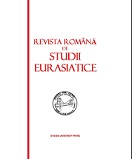STRUCTURILE PUTERII. ÎNCERCĂRI AUTOHTONE DE INSTAURARE A MONARHIEI EREDITARE ÎN PRINCIPATELE ROMÂNE (SECOLUL XVII)
POWER’S STRUCTURES. AUTOCHTHONOUS ATTEMPS AT ESTABLISHING A HEREDITARY MONARCHY IN THE ROMANIAN PRINCIPALITIES IN THE 17th CENTURY
Author(s): Iolanda ŢighiliuSubject(s): History
Published by: Ovidius University Press
Keywords: Walachia; Moldavia; Hereditary Monarchy
Summary/Abstract: The influence exerted by the Byzantine Empire on the Romanian Principalitiesis obvious in the process of the organization of the fundamental institutions of the mediaeval state. On the one side, there is crucial to talk to the Hospodar and his Institution. The permanent features of the Hospodar’s institution in Walachia and Moldavia were: First, the Hospodar is the chief of a feudal monarchy; second, the Hospodar is elected by the boyars for life out of a limited circle of eligible candidates (the mixed principle actually functioned, combining heredity with election proper). Third, the candidate shoud be male and physically fit; four, at the basis of the institution of the Hospodar was the belief that the ruler’s power was of divine origin; and five, the Voivode’s power is absolute. In the political context of the age, Hospodars Dimitrie Cantemir and Constantin Brancoveanu tried to detach themselves from the Ottoman rule. Their siding with Russia, during the Russo- Turkish War of 1711 was meant to free their countries and to establish a hereditary dynastic evolution. The attempts to establish hereditary monarchies failed. A new age was beginning, the Phanariote rule in the Romanian lands. The institution of the voivode was seriously downgraded, the ruler now having a status that resembled that of a provincial governor in the Ottoman Empire.
Journal: Revista Română de Studii Eurasiatice
- Issue Year: 5/2009
- Issue No: 1+2
- Page Range: 23-40
- Page Count: 18
- Language: Romanian

